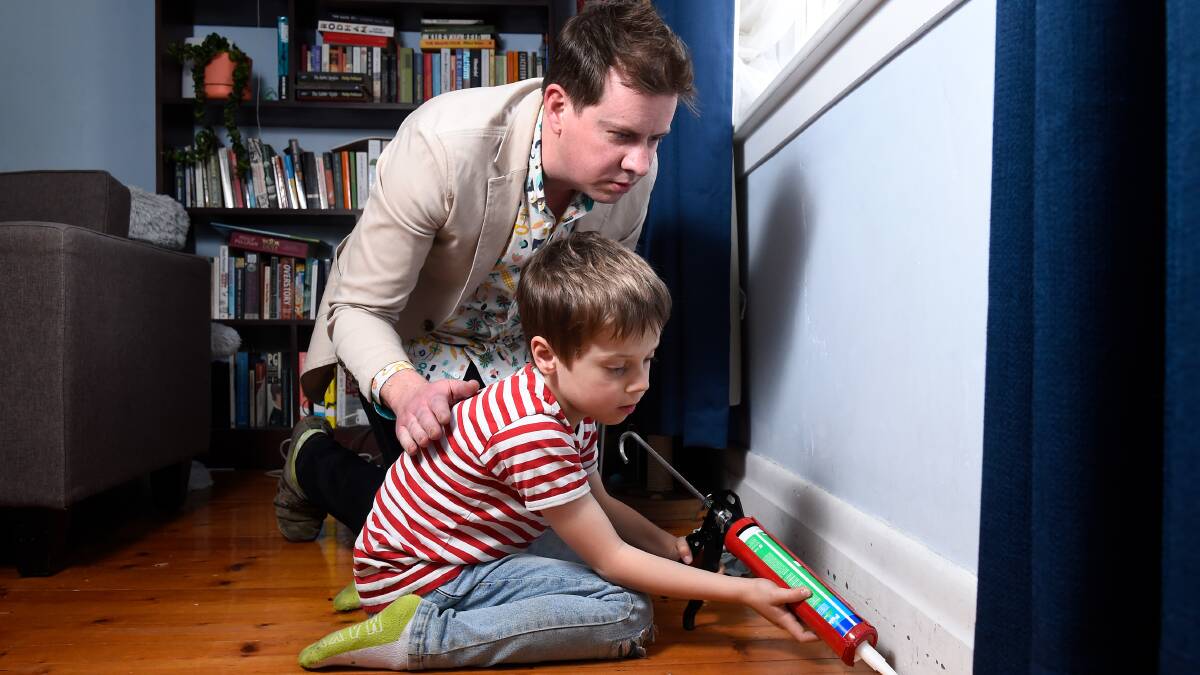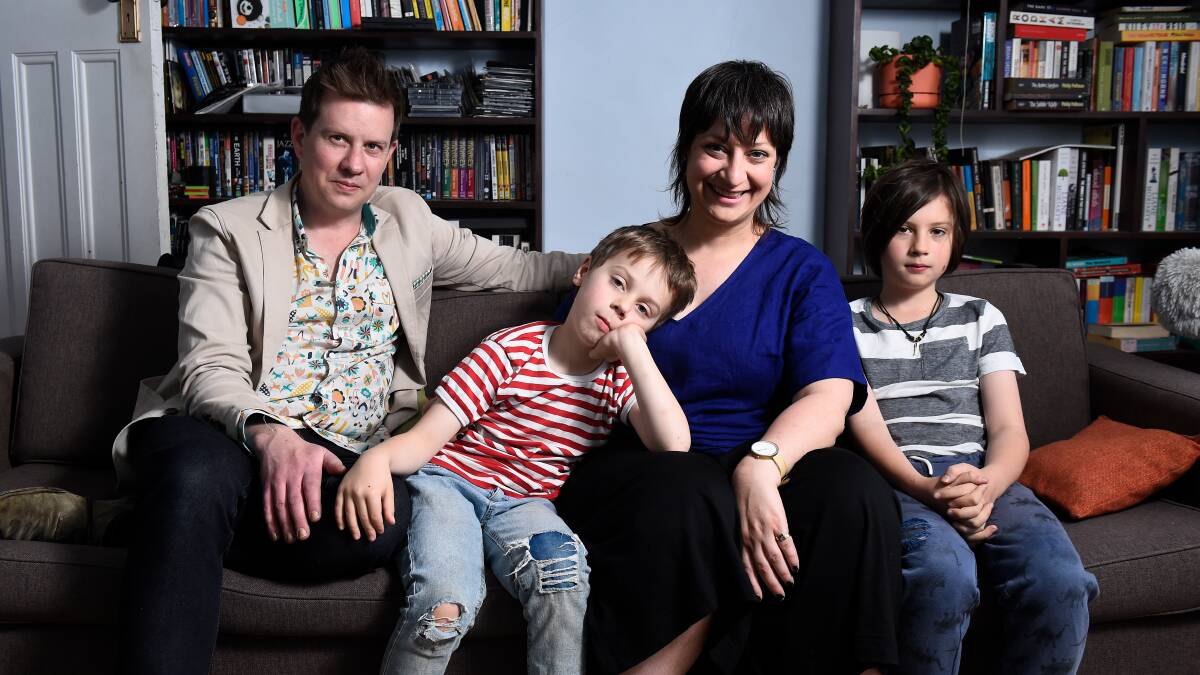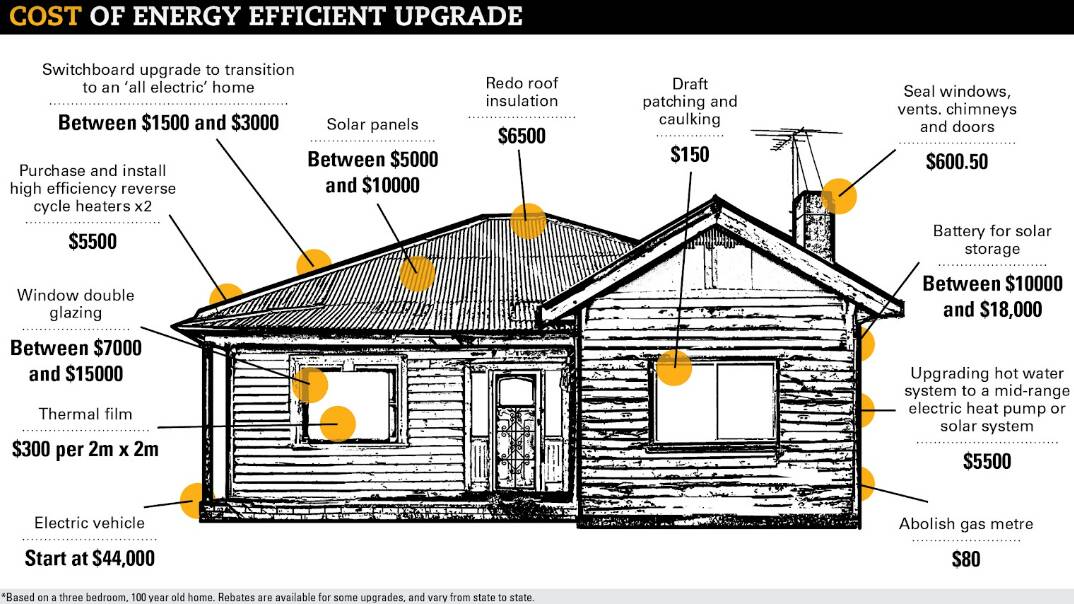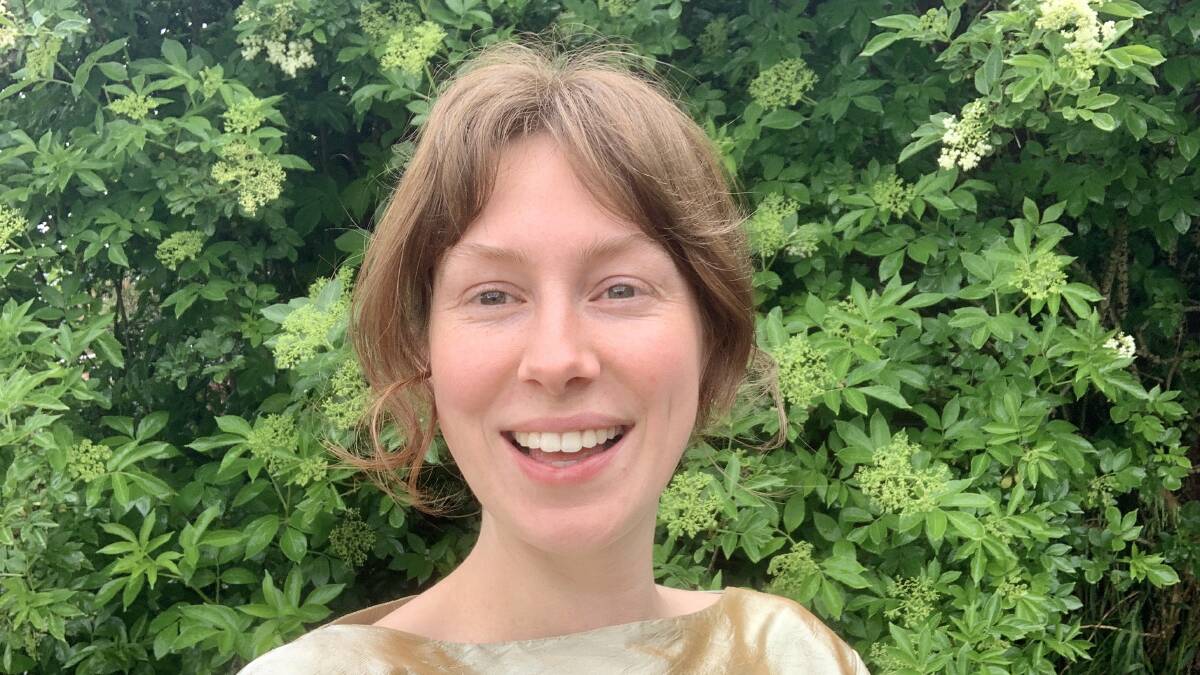
The Ludowyk-Thomas family left the big city and moved to the country for more space and cheaper housing.
Subscribe now for unlimited access.
$0/
(min cost $0)
or signup to continue reading
Brothers Max, 10, and seven-year-old Hugo have been helping their dad caulk the floors to make their home in Victoria's central highlands more energy efficient, lower household's emissions - and reduce energy bills.
"[Lower house prices] took a lot of financial pressure off us to go from the city to the regions but, having said that, we're in an old house in the middle of Ballarat," Mr Thomas said.
"It's not an efficient house, the heating costs and winter gets a lot colder than in Melbourne, [so it's] a big jump on what we were experiencing."
The federal Labor government's first budget delivered in October forecast bills for Australian households will grow over the next two years as electricity bills look to increase by 20 per cent in 2022 and a further 30 per cent through 2023.
Gas bills are expected to increase by up to 20 per cent in the next year, and then by another 20 per cent in 2023 to 2024.
The Ludowyk-Thomas' three bedroom, one bathroom home was built around 1925 and has an energy efficiency rating of 2.9 out of 10 under Victoria's Residential Efficiency Scorecard program, just below the state average of three.
It's not an efficient house - the heating costs and winter gets a lot colder.
- Leith Thomas, Ballarat homeowner
While 82 per cent of their energy costs are associated with heating, 16 per cent goes on hot water. Lighting is responsible for the remaining two per cent.
Roof-top solar panels were already installed when they bought, meeting 11 per cent of the home's fixed appliance energy demand.
"The solar panels gave us that little bit of a leg up," Mr Thomas said.
"The flip side is there's not much insulation. There's a fairly slapdash, add-on kitchen out the back that is a good 10 degrees colder than the rest of the house at any given moment."
Even with two incomes the cost to Mr Thomas and his wife, Natasha Ludowyk, of making their home more energy efficient is prohibitive.

Planning for energy security
According to the Australian Greenhouse Calculator, at least one fifth of the country's emissions are produced by Australian households.
Ballarat builder and chair of the Grampians New Energy Taskforce Stuart Benjamin said home owners should consider how quickly efficiency measures would result in a return on investment.
Thermal window film paid off very quickly, for example. While rooftop solar might take five years before the cost was recouped.
Batteries could also offer energy security at a time coal-fired power stations are in decline.
"It's about 14 years payback [on batteries] so most people say, 'Don't worry, that's too long; it's not worth doing'. What they forget is it's not just about consumption, it's about [security]," Mr Benjamin said.

Rewiring the nation
The nation's electricity use is projected to double by 2050, according to the Australian Energy Market Operator (AEMO).
In June, the AEMO called for $13 billion in transmission investment to propel the move to renewable energy amid rising costs of coal and gas, power outages, and winter demand.
Climate Energy Finance director Tim Buckley said Australia's predicament could have been avoided by policy certainty around renewable energy.
"We really need to see the $20 billion 'rewiring the nation program' implemented at speed," the finance analyst said.
"You can build rooftop solar literally in four hours. You can build a utility solar project in one to two years. You can build an onshore wind project in two years, offshore wind probably five to eight years.
"But what you can't do is build grid capacity," Mr Buckley said.
Bulk buy with your community
Community energy co-operative Hepburn Energy have supported a number of projects to help household efficiency, including solar battery and electric vehicle bulk buys.
Manager Taryn Lane said bulk buys were a more "trustful" process to help people make the initial transition.
"The pricing has been pre-negotiated [and] it's through partners that are certified using high quality equipment," she said.
"Their hand gets held through the whole process."
Ellie's story

Where I live in the Victorian central highlands it's pretty special.
We've got beautiful bushland and national parks, as well as some of the state's most important agricultural crops.
We have fast-expanding communities made up of young families, students, tree-changers and, increasingly, workers brought in by the growing renewable energy sector in our sunny, windy region.
We've had to deal with bushfires, floods and drought. And there will be more to come as natural disasters increase in intensity and severity as a result of human-made climate change.
Accurate and people-first climate reporting is more important now than ever.
I'm proud to be part of this series because, at its heart, are the stories of regional Australia and its people.
You can read the full Young and Regional: Our Climate Future series here.


